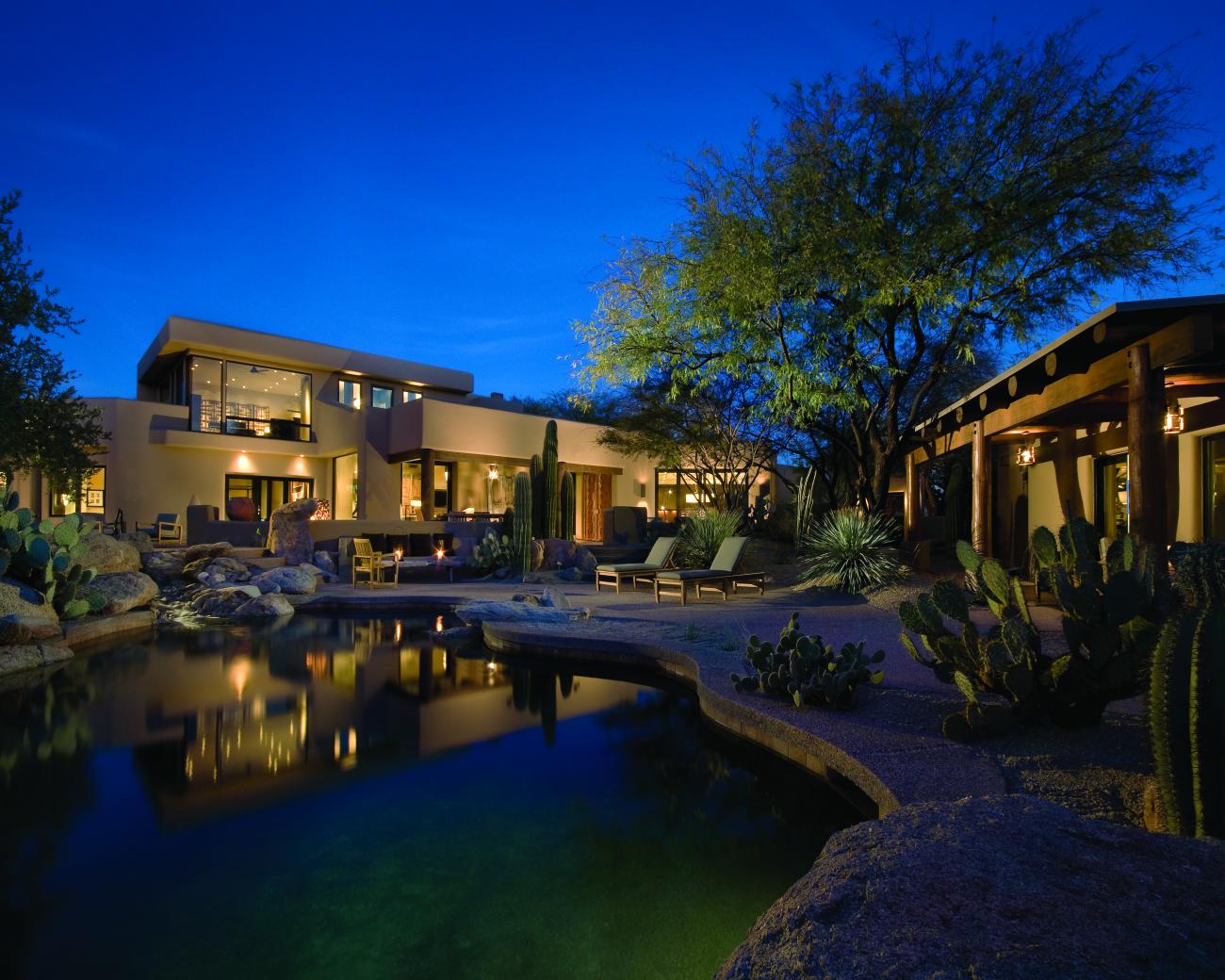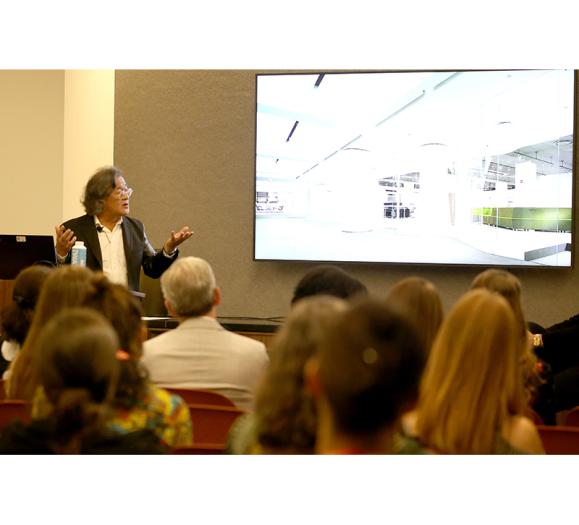TIP 1: Be street smart
As you’ve heard many times before, “You only get one chance to make a first impression.” From the street, the way a house looks at night says a lot about the people inside. First off, security lighting is not landscape lighting. Lights mounted under the eaves of the house that glare out at people are simply not welcoming. It’s even worse when a motion sensor turns them on the moment guests start to walk toward the house. It’s not saying “Welcome, come on in,” it’s saying “Halt, who goes there?”
Also, consider putting some illumination behind the windows at the front of the house as a part of the landscape controls. Dark black windows are not inviting. The front of the house will look like a jack-o’-lantern when the candle has gone out. Lastly, make sure to light the yard all the way from the sidewalk to the front door in order to increase the sense of depth to the property. Similarly, make sure that there is some lighting to the far right and the far left of the property so that it looks as wide as possible. When it comes real estate, size does matter.
TIP 2: Layer, layer, layer
Traditionally, front yard lighting consisted of a pole lantern at the bottom of the driveway and a sconce at the front door. Now, you need to consider light layering, just as you would do inside the house. You want to introduce elements of task, accent, ambient and decorative light as part of the design.
Task lighting helps people get from the street safely up to the front door. This would include pathway and step lighting. The light source should be shielded so that it casts light down along the planting areas that border the pathways. Traditional pagoda lights can visually overpower the surrounding landscape. Accent lighting can be ground-mounted, tree-mounted or building-mounted directional fixtures that highlight foliage, planter boxes, water features or sculptures. They can also throw a soft wash of light along the facade of the house to pick up the texture of the building material.
Ambient light helps create the sense of an outdoor room. If you have mature trees, up lighting the underside of the canopy of foliage creates the sense of a ceiling. Also, adding indirect lighting for the front porch or entryway draws people up to the front door and softens the shadows on people’s faces.
Think of decorative light as architectural jewelry —it’s a little bit of visual bling that sparkles against the night sky. People often think that if they put high-wattage bulbs in their decorative fixtures they’re providing more light. Actually, what they’re providing is more glare. My recommendation is to keep wattage in the 25 to 45W range — it should be a subtle kiss of illumination, not a slap.
All of these lights should have LEDs sources, whether integrated components or bulbs. Consider a color temperature in the 3000K range, which is the color of halogen. This helps make plantings appear healthier.
The other advantage to LEDs is that they don’t change color temperature when dimmed. Traditional incandescent sources become yellower, which makes plants look unhealthy. Look for LEDs sources that have a CRI of 90 or higher.
TIP 3: Size and whispers
Whether it’s a pendant light in the archway above the front door or a pair of sconces flanking the entry, scale is extremely important. It can be really hard to tell from a catalog sheet the true size of a fixture. If there’s any chance that you can borrow one from the lighting showroom, it’s the best way to see how it looks from the road. Have a friend hold it up against the house and run out to the street to see if it’s the right scale. If that’s not possible, make a template out of cardboard, using the dimensions from the catalog. It also helps determine what the correct mounting height should be.
It can be a costly mistake if the fixture is mounted too high or too low.







